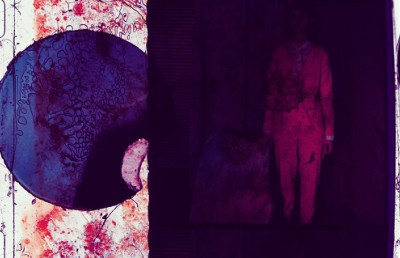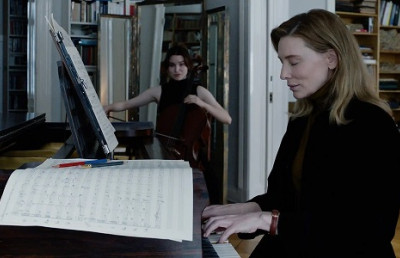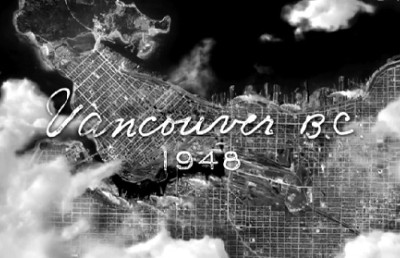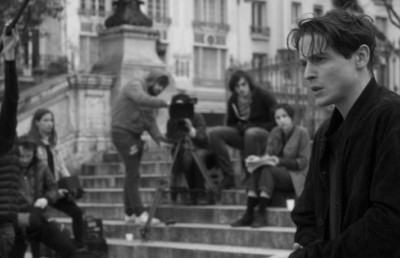How to Make an Avant-Garde Film Without Completely Disappearing Up Your Own Ass: The 47th Toronto International Film Festival
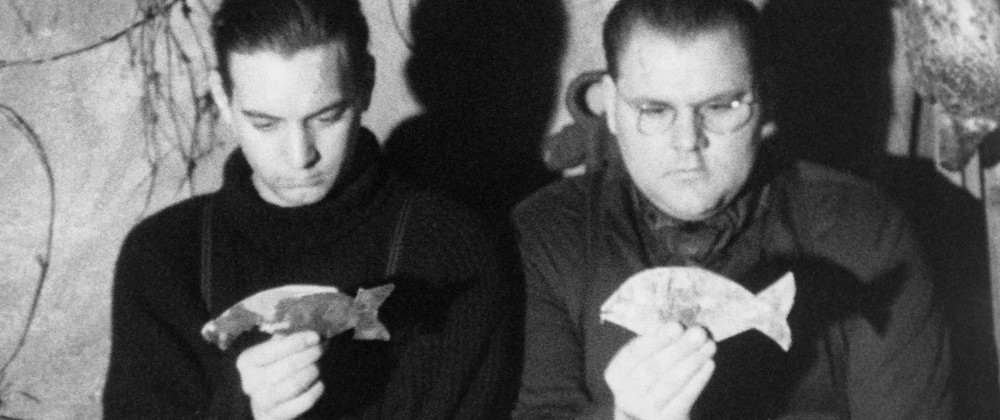
Tales from the Gimli Hospital Redux (Image source, Zeitgeist Films)
Short on Context
The last time I attended the Toronto International Film Festival (TIFF) in 2019, the Wavelengths section of avant-garde films consisted of ten features, two medium-length works, and four programmes of shorts, and though the latter were only screened once each, it was in one of the larger auditoriums at the TIFF Bell Lightbox (Cinema 3, if memory serves). This year (2022, however, the Wavelengths section included just eight features, two programmes of shorts, and for the first time in several years, a gallery installation, although it was inconveniently located several blocks from the festival village, as if TIFF didn’t want to be too closely associated with it. To be sure, this tally represents a notable increase on 2021, when the Wavelengths section was comprised of only six features and seven shorts, and I expect this upward trend will continue for a year or two more as the festival finds its new, post-pandemic—or pandemic infinity—normal. However, it’s a concerning sign that I was able to get a ticket to the second programme of Wavelengths shorts using my badge on the day of the screening without having to wait in the rush line—something that’s never happened to me before in all the years I’ve attended the festival—even though the screening was held in the smaller Cinema 4, which has fewer seats.
Indeed, in the press release announcing this year’s lineup, programmer Andréa Picard alludes to “a climate increasingly challenging for non-commercial and non-conforming work,” although she does not assign blame for this to any specific cause or group. Rather, by using the term “climate,” Picard implies that the waning of avant-garde cinema is part of a natural cycle, like a tide that moves in and out. And undoubtedly, there is no singular cause for the current state of avant-garde film. Nevertheless, if spectators appear less interested in such films than in the past, surely much of the blame for this rests with the filmmakers themselves, who often seem indifferent to spectators, and with the programmers, who, by selecting films that are willfully obscure, contribute to the further marginalization of avant-garde cinema. Tellingly, at the second screening of Wavelengths shorts, the filmmakers in attendance were steadfast in their refusal to provide any meaningful context for their films—or, indeed, to say anything about them at all—before they were projected. In this case, the filmmakers’ reticence turned out not to be fatal, but while watching the first programme of shorts the night before, I often literally didn’t know what I was looking at, much less how to engage with it.
Part of my confusion was perhaps attributable to my own over-confidence in simply showing up for the screening without bothering to look at the programme guide to see which films were playing or who made them—although only one of the films, Céline Condorelli and Ben Rivers’ After Work, was co-directed by a filmmaker whose previous work I was familiar with. In any case, I felt like I was on fairly firm footing with the first film in the programme, Tacita Dean’s Fata Morgana, a silent 16mm landscape film and the only Wavelengths short this year projected on celluloid. The film opens with a sequence of shots of an orange predawn sky above a swatch of black that is gradually revealed to be an arid desert. Apart from a vertical structure with a blinking light at the top, these initial shots are devoid of any evidence of human presence, but as day breaks, an increasing number of trucks appear along the horizon line, moving across the screen from right to left or left to right. Meanwhile, the heat begins to warp the light, creating mirages that are especially pronounced when Dean shoots with a telephoto lens. The film is not without its enigmas, not least of all its relation to Werner Herzog’s 1970 film of the same name—a connection that couldn’t have been lost on either Dean or the programmers, although there’s no mention of it in the programme guide—but I still understood enough not to feel completely stumped by it.
On the other hand, I spent the duration of Vincent Grenier’s Moonrise —which consists of a shifting monochrome array of circular patterns accompanied by a cacophonous soundtrack of ambient tapping sounds (including, at one point, the sound of fingers on a keyboard)—just trying to figure out what it was I was seeing and hearing. (The film’s title doesn’t appear until the end.) Had I looked at the programme guide before the screening, I would’ve known that the image is a record of the shadows cast on a wall by a rainstorm, though I’m not sure having this information would’ve enhanced the experience of watching the film very much as I would still be left with the question of what Grenier’s purpose was in filming these shadows. (I imagine he had something more profound in mind than, “Oooh, pretty!”) Perhaps it would’ve been useful for me to know something at all about Grenier’s previous work, as it would’ve provided me with a context for this film. Going in cold, however, felt a bit like watching Chinese opera when you don’t speak Chinese.
Then again, I doubt I would’ve had a better understanding of After Work even if I had known in advance that Rivers co-directed it (his name doesn’t appear until the closing credits), not only because the film’s subject matter has no obvious connection to that of such films as A Spell to Ward Off the Darkness (co-directed with Ben Russell, 2013), The Sky Trembles and the Earth Is Afraid and the Two Eyes Are Not Brothers (2015), and Krabi, 2562 (co-directed with Anocha Suwichakornpong, 2019), but also because the film inundates us with more information than my brain is capable of processing. For starters, it isn’t always immediately clear what we’re looking at as Condorelli and Rivers often superimpose different blue- and red-tinted shots of the same space on top of one another so that some images look like anaglyphic 3D images viewed without glasses. And even after recognizing these images as different shots of a public housing estate where a playground is under construction, we still have to figure out how these images relate to the shots of men working in a foundry and inserts of cats and foxes, to say nothing of the dense voice-over, which is sometimes doubled so that the voice coming out of the speakers on the right is saying something completely different from the voice coming out of the speakers on the left. To follow the voice-over on its own would be hard enough, but to do so while simultaneously deciphering the images would require me to grow a second brain.
The two other films in the programme, Fox Maxy’s F1ghting Looks Different 2 Me Now and Parastoo Anoushahpour’s The Time That Separates Us, are not only comparably dense in their juxtapositions of heterogeneous sounds and images but also assume a familiarity with specific cultures and histories that not all spectators will have. The former—which the programme guide aptly describes as “maximalist”—is a hectic collage of short, disconnected images of the Mesa Grande Reservation (including what appears to be unstaged cell phone footage of an unseen woman being ejected from the reservation by police despite having indigenous ancestry), early video games, a woman’s hand covered in red paint and holding up a paint sample with the name “No More Drama,” and distorted fragments of pop songs like John Denver’s “Take Me Home, Country Roads.” A title stating that the film was made without the support of any tribe or tribal council is flashed onscreen so briefly I could only read about half of it, though it may provide some necessary context for understanding the film’s political intervention. According to a profile in Teen Vogue, Maxy learned filmmaking from using Instagram (Tourjée 2020), and as with much internet culture, I get the sense that Maxy is addressing an initiated in-group and deliberately erecting barriers to exclude outsiders.
At thirty-five minutes, The Time That Separates Us was the longest and most ambitious film in the programme, as well as the most eclectic in the heterogeneous materials it draws together: blotchy video of a fire at the foot of the Temple of Hercules, extremely grainy super 8 footage of a woman tacking up different-sized blowups of the same picture, which either represents a naked trans woman with a huge penis or a cisgendered woman holding a dildo, a shot of two women whose faces we never see sitting on a hill overlooking a highway and translating an English text into Arabic, text messages between two people on opposite sides of the Jordan-Palestine border, a flickering, pixelated image of hands ripping open a Sodom apple, and footage of Christians being baptized while a Jordanian soldier patrols the area with an automatic rifle. Although the film limits itself to just one voice-over at a time and the words are directly relevant to the images, providing useful context, even spectators conversant with both the Bible and contemporary Mideast politics may feel baffled by the film as it often alludes to these subjects in an elliptical, offhand manner. In the Q&A after the screening, Anoushahpour explained that when one character texts another a picture of a body of water with the word “Here” scrawled above an arrow indicating a point on the horizon, the character sending the picture and the one receiving it are standing on opposite sides of the Jordan-Palestine border (a border that Anoushahpour, as an Iranian, is forbidden to cross). However, there is no way for the spectator to infer this based on the image alone, since the picture we see looks like every other body of water on the face of the earth. Although I found much of the film intriguing, it’s ultimately limited by Anoushahpour’s seeming indifference to her spectator.
Vanishing Acts
In comparison, the films in the second programme of Wavelengths shorts were considerably more accessible. Ironically, the only one I felt like I missed the boat on, Wiame Haddad’s Hors-titre, was the most minimal. Shot on Super 8, the film begins with tightly framed images in colour of a cramped living space—unwashed dishes, black-and-white photos of Arab faces tacked on a wall, a pile of newspapers on an unmade bed, one with a headline reading “Algérie!” in capital letters—followed by a sequence in black-and-white that reveals the room to be a set illuminated by artificial lights. Based on the newspaper headline, I incorrectly inferred that the room was an apartment in Algeria circa 1960, but according to the programme guide, it’s actually the apartment of an Algerian immigrant in France in October, 1961 (i.e., at the time of the Paris massacre). Of course, it’s unlikely that an Algerian newspaper would run an article with the headline “Algérie!,” but excepting the title, there’s nothing in the film to indicate the apartment is in France, nor does the film make any visible reference to the Paris massacre. But putting aside my confusion about where the apartment is supposed to have been located, it’s still not clear to me what the spectator is supposed to do with these images. I think I get the basic point of the film, which mourns the vanished living spaces of Algerian immigrants in postwar France by self-reflexively foregrounding the artifice necessarily involved in their recreation, but beyond recognizing this, the film leaves little space for the creative participation of the spectator in the completion of the work.
I found it easier to engage with Tiffany Sia’s What Rules the Invisible —the other postcolonial memory film in the programme—not only because of my greater familiarity with Hong Kong and its history but also because the film requires more active participation on the part of the spectator without ever seeming willfully obscure. The film alternates between low-res archival images of mid-twentieth century Hong Kong that look like they came from YouTube—the cable car to the Peak, pedestrians walking on the sidewalk and getting into streetcars, a man working in a wet market who looks directly into the camera—and intertitles describing life in the territory during the Japanese occupation and explaining that the police stations in Prince Edward and Tsim Sha Tsui are haunted by the ghosts of political prisoners who were executed there. If the relevance of the intertitles to the images remains somewhat enigmatic (as per the title, state violence is invisible in the film), at least the intertitles were onscreen long enough for me to read them and were complete enough to be understood in themselves, and the film’s soundtrack is fairly sparse, consisting only of low ambient noise, and at the end, an untranslated Chinese folk song sung a cappella by the filmmaker’s mother.
It’s perhaps not incidental to the success of Luis Arnías and Jessica Sarah Rinland’s two-part Puerta a puerta that, in the Q&A after the screening, Rinland said sharing her films with spectators was the whole point of making them. Like Rinland’s Those That, at a Distance, Resemble Another (2019), Puerta a puerta pairs decontextualized 16mm images of hands manipulating objects with unidentified offscreen voices, but here at least I felt like I had all the information I needed. In the first part of the film, we see a cardboard box being taped together and filled with shampoos and lotions, while offscreen a male and female voice casually discuss sending consumer products to relatives in Venezuela and the ethics of killing an entire emu to produce a cream you only rub on your knees. (Although it’s never explained why the man and the woman are sending these products to Venezuela, anyone who reads the news can fill in the blanks for themselves.) After an interval of black leader accompanied by the chirping of birds, the second part of the film shows the hands of a man and a girl holding playing cards with pictures of birds on them. The film challenges us to infer a broader context from the scanty, partial evidence of its sounds and images, and to spot similarities and differences across its two parts, yet I never felt perplexed by it. Indeed, it’s a sign of the filmmakers’ respect for the spectator that they include an interval after the first part, so we have time to digest what we’ve seen and heard before moving on to the second.
A similar respect for the spectator is evidenced in Angelo Madsen Minax’s Bigger on the Inside and Kurt Walker’s I Thought the World of You, which are no less steeped in internet culture than F1ghting Looks Different 2 Me Now (Fox Maxy, 2022) yet are still accessible to technophobes like myself. The former—which could be interpreted as a belated ironic rejoinder to Stan Brakhage’s Dog Star Man (1964)—is a witty meditation on inner- and outer-space that draws connections between rhythmically edited still photographs of a wintery landscape, computer-generated imagery representing a wormhole, flirty text messages between strangers whose genders and sexual orientations are never specified, amateur philosophical lectures on YouTube, intertitles in which an unreliable narrator tries to impress us by talking about taking ketamine and fisting themself (i.e., literally disappearing up their own ass-hole), and Underworld’s “Born Slippy.” The latter is a speculative biopic of the mononymic singer-songwriter Lewis, who produced one self-released album, L’Amour, in 1983 and then vanished. The film alternates between re-enactments, slickly photographed in black-and-white—in which two doubles representing Lewis and his girlfriend in 1982 (who are always filmed with their backs to the camera) travel in a convertible from Canada to Los Angeles in search of fame—and intertitles quoting comments left on an internet message board thirty years later in which various users speculate on what might’ve happened to them. In one re-enactment, Lewis and his girlfriend stop by the ocean, and when the former begins to play the guitar, a clip from F.W. Murnau’s Faust—Eine deutsche Volkssage (1926) superimposed on the instrument stands in for the music we don’t hear, suggesting perhaps that Lewis’ music is infused with an occult power that cannot be represented directly but only indicated.
The last film in the programme, Pablo Mazzolo’s The Newest Olds, was intended to be projected on 35mm but had to be shown as a DCP because the print didn’t arrive from the lab in time for the screening, which means I haven’t really seen the film but only an approximation of it. The film’s largely still images of downtown office buildings in Windsor and Detroit, depopulated forests, and dead birds on a white background are distorted by optical printing techniques that cause them to flicker, pulse, and twitch without ever ceasing to be legible as images—and thus, the experience of seeing the film on video, without the flicker of the projector, is fundamentally different from what it would’ve been on celluloid. The film’s soundtrack starts out sparse with only low ambient noises and then becomes increasingly cacophonous, layering clips from multiple news reports about birds mysteriously dying and interviews with striking workers, though in contrast with After Work, there’s enough redundancy in what the voices are saying that one gets the gist of it without having to hear every word. A great deal about the film remains mysterious to me, beginning with the significance of its title, but like Fata Morgana, What Rules the Invisible, Puerta a puerta, Bigger on the Inside, and I Thought the World of You, it finds just the right balance between clarity and obscurity, intriguing the spectator with its enigmas instead of alienating them.
The Form of Anarchy
I had a feeling Cyril Schäublin’s Unrest (Unrueh) was going to be something special right from its opening shot, which displays an uncommon boldness in its framing. Along the very bottom of the frame are a well-dressed Russian woman on the far left with her back to the camera and a photographer and his assistant just off-centre to the right side of the screen. Entering from the right, three more women walk to the centre, where one of them asks the photographer if they are in the frame. A servant enters on the right and takes a drink to the first woman, who then joins the others. Above them, a giant mass of foliage dominates the frame, and Schäublin and his cinematographer, Silvan Hillmann, use a telephoto lens to flatten the space so the characters look like they’re pressed right up against it. Even more impressive for the way it uses offscreen space to surprise us is a later scene that begins with a group of anarchists huddled together on a wood bridge in the bottom centre of the frame, while on the left, a police officer standing on an elevated platform manually adjusts a clock. After the police officer climbs down a ladder, disappearing from view, a line of female watchmakers appears from behind a wall on the same platform, exiting the frame on the left and then re-entering a few seconds later on the same level as the anarchists, whom they meet on the bridge. What only gradually became apparent to me, however, is how purposeful Schäublin’s visual style is, giving tangible form to the film’s anarchist politics by assigning equal weight to all of the characters instead of emphasizing a handful of leading players.
Indeed, the film’s narrative is as decentred as the two compositions described above. The closest thing it has to a central character is the Russian cartographer Pyotor Kropotkin (Alexei Evstratov), who observes more than acts and at one point declares superfluously, “I’m no protagonist.” Or, to put it another way, the film is less the story of any one character than it is an exposition of social relations in a Swiss manufacturing town in the 1870s, where anarchist politics, watchmaking, and visual representation were all deeply entwined with one another. By putting all the characters on an equal footing, the film’s visual style and dedramatized narrative block the spectator from forming a strong sympathetic attachment to anyone in particular, especially as the characters are defined largely in terms of their class positions rather than their personalities. Moreover, in contrast with Soviet montage cinema, the film doesn’t rely on moral stereotyping to discredit the representatives of the police or the bourgeoisie, who are anything but irrational. In one scene, the director of the watch factory tells a visiting Italian official that he closely reads the anarchists’ newspaper because it provides more accurate information than its bourgeois competitors—information that helped him to predict a financial crisis and thereby save himself a lot of money. Deflating any sense of suspense, the film redirects the spectator’s attention from anticipating the outcome of the story to trying to understand the underlying forces shaping social relations in the town.
Throughout the film, Schäublin underscores that the struggle between the bourgeoisie and the anarchists is in part a struggle over representation, over who gets to be in the frame. While walking in the mountains, Kropotkin and a watchmaker, Josephine (Clara Gostynski), are stopped by a police officer who tells them they’ll have to wait as the photographer is taking a picture (offscreen) to promote the factory and they can’t enter the frame. Ignoring him, Kropotkin and Josephine step into the photographer’s frame and exit the film frame, leaving the police officer alone in the bottom righthand corner of the screen, and the framing of the shot comments ironically on his ineffectuality by visibly diminishing him. But while the framing makes it clear that Schäublin’s sympathies lie with the anarchists, the film’s understanding of industrial capitalism is nevertheless fascinatingly ambivalent, highlighting the precision of the female watchmakers’ craft as well as the oppressive proto-Taylorism of the factory managers, who even dictate which routes the watchmakers should take when moving from one part of the factory to another in order to maximize their productivity. Taking its title from the agitating mechanism that produces movement in watches, Unrest brings into perception the anarchic utopian potential that is latent in even the most tightly controlled societies and is repressed by the representational practices of bourgeois image-making, demonstrating that political seriousness in film is inseparable from form and style.
The Anatomy Lesson of Drs. Castaing-Taylor and Paravel
Though not without its detractors, Lucien Castaing-Taylor and Véréna Paravel’s Leviathan (2012) is one of the most widely acclaimed avant-garde films of the past decade. However, notwithstanding its intrinsic aesthetic merit, the level of prestige the film enjoys—especially in academia, as evidenced by the slew of scholarly articles that appeared in the wake of its release (see Metzger 2015; Chkhaidze 2017; and Unger 2017)—would be unthinkable if not for the filmmakers’ association with Harvard’s Sensory Ethnography Lab (SEL), which Castaing-Taylor directs, as it lends their work the air of a serious, scholarly undertaking: Castaing-Taylor and Paravel aren’t just making arty avant-garde films for the festival-gallery circuit, they’re producing knowledge about the world. De Humani Corporis Fabrica (which Google translates as “Of the structure of the human body”) is the most disciplined and, dare I say, the most entertaining film of theirs I’ve seen so far, but despite its characteristically meaty subject matter, it doesn’t strike me as an especially serious one.
Filmed in several public hospitals in France that are only identified in the closing credits, De Humani Corporis Fabrica consists of a series of self-contained, achronological vignettes, alternating between gnarly surgery scenes in which a tiny fiberoptic camera probes the brains, prostates, and wombs of patients who are sometimes awake and talking during the procedures and more languorous scenes of elderly, semi-coherent patients—whom it gradually becomes apparent are suffering from Alzheimer’s—wandering aimlessly up and down the halls of the ward where they are effectively incarcerated. In combination with the film’s episodic structure—which, like the documentaries of Frederick Wiseman, plunges us into each situation without any contextual information and leaves us to gradually find our bearings—the haptic, nearly abstract close-up images of human viscera defamiliarize the body so that we perceive it with the same astonishment Dr. Nick felt when operating on Homer Simpson (“What the Hell Is That?”: The Movie would be an apt alternate title), and the doctor’s blasé offscreen chitchat often makes a hilarious counterpoint to the images. (During a prostate surgery, one doctor grouses, “This guy’s weirdly put together.”)
However, for all their concern with the structure of the human body, the filmmakers don’t turn anything resembling the same scientific gaze on the structure of the hospital as an institution, but simply take it as a given, much as they did commercial fishing in Leviathan. At one point, a doctor laments that he’s so overworked he can’t even get an erection, but we leave the film with no better understanding of why French doctors work such long, boner-killing hours, or why Alzheimer’s patients spend their last days as prisoners, than we came in with. De Humani Corporis Fabrica forcefully demonstrates the power of medical science to reshape the human body—straightening spines, inserting lenses into eyeballs, and clearing away cotton candy blockages in the brain—while at the same time treating the French healthcare system as if it were a brute fact of nature that’s impervious to human agency.
Beyond Official Avant-Garde Cinema
Through its programming selections and its omissions, the Wavelengths section makes an implicit assertion about what counts as an avant-garde film. However, it shouldn’t be forgotten that Wavelengths represents only idea of what avant-garde cinema can be, and peppered throughout the festival, one sometimes encounters other kinds of avant-garde films hiding behind different labels, as if the films were in a sort of witness protection programme for dissident avant-garde films.
One example of the kind of film I’m thinking of is Tales from the Gimli Hospital Redux, a slightly tweaked 4K restoration of Guy Maddin’s first feature (1988) that was screened as part of the TIFF Cinémathèque programme of classic films. Introducing the new version, Maddin said his original intention was to make a Hollywood movie about Gimli, an Icelandic-Canadian fishing community north of Winnipeg, but the film’s artisanal mode of production—it was shot piecemeal over a year and a half without a script—more closely resembles the working methods of avant-garde filmmakers than the industrial mode of both Hollywood and official Canadian cinema, and though the film tells a story, its plot is essentially a pretext for a succession of surrealist non sequiturs. (In one of the film’s numerous stories within stories, three girls go missing in the woods only to reappear several months later inexplicably floating down a river in three identical coffins.) In other words, the film adopts the outward appearance of a commercial feature while systematically undermining the narrative procedures of classical cinema—or, to use the jargon of the Russian formalists, the film bears its devices by foregrounding artistic motivation both in its digressive plot and its anachronistic style, as the film’s citations of silent film conventions aren’t motivated by the period of the story (one of the first things we see in the film is a Big Gulp cup) (Shklovsky 1965). But while the film doesn’t “work” in commercial terms, it would be misleading to describe it simply as a clandestine avant-garde film. Rather, like all of Maddin’s films, it reminds us how much overlap there is between the aesthetics of Hollywood cinema and the avant-garde.
Equally difficult to classify, William Kentridge’s Self-Portrait as a Coffee Pot (which was screened in the festival’s documentary section) practically reinvents the cinema from the ground up, yet contrary to the received wisdom that “avant-garde” is virtually synonymous with “difficult” (see Zryd 2007), the film—perhaps I ought to say the movie —is as entertaining as any Hollywood feature you’ll see this year. It’s also very funny. The version of the film screened at TIFF is comprised of the first three parts of an as yet unfinished nine-part series whose half-hour episodes are meant to be viewed individually like a TV show rather than one after another, and the experience of watching the film in this form is ultimately a bit exhausting due to the sustained conceptual and aesthetic density of each of its episodes, which weave together reflections on such diverse topics as aging, art-making, colonialism, COVID-19, entropy, landscape, memory, and subjectivity. That said, the film requires no specialized knowledge of either avant-garde cinema in general or Kentridge’s previous work (which includes not only films but also drawings, sculptures, operas, and puppet shows) in particular as it generously provides us with all the information we need to understand and enjoy it.
Filmed in Kentridge’s Johannesburg studio with a small crew and no script, Self-Portrait as a Coffee Pot recalls the films of Georges Méliès both in its artisanal mode of production and the way it self-reflexively foregrounds its own artifices while still astounding us with its illusionism. Kentridge’s signature technique is a particularly painstaking form of animation in which the artist partially erases, redraws, and photographs the same charcoal drawing over and over so that traces of the drawing’s earlier stages remain visible as in a palimpsest, and here we see Kentridge working on one part of a drawing while other areas seem to fill themselves in and move as if by magic, so that we’re conscious of two distinct time frames coexisting within the same shot: the real time of Kentridge drawing in his studio and the constructed time of the animation. On the other hand, although much of the film consists of a running argument between two William Kentridges—both dressed in the same white shirt and black pants and representing different aspects of the artist’s persona—who are both onscreen almost continuously, the digital trickery involved in the illusion is, for the most part, so seamless that we very quickly forget about the trickery and naïvely succumb to the illusion. Without making a point of it, the film shows up the crudity of theoretical binaries positing an absolute opposition of transparency and self-reflexivity, identification and alienation, pleasure and knowledge (see Wollen 2009), which are too blunt to capture the subtle gradations of belief that cinema can engender in us and that fluctuate continuously over the course of watching a film. More than any other film I saw at TIFF 2022, Self-Portrait as a Coffee Pot restores to cinema a sense of wonder and astonishment.
Works Cited
Chkhaidze, Irina. “Seen from the Viewpoint of a Fish: Posthumanist Observation in Lucien Castaing-Taylor and Véréna Paravel’s Leviathan.” Sociologija. Mintis ir Veiksmas 40, no. 1 (2017): 26-51.
Metzger, Michael. “Leviathan‘s Labors Lost, or: Who Works After the Subject?” Millennium Film Journal 61 (2015): 38-48.
Shklovsky, Viktor. “Sterne’s Tristram Shandy: Stylistic Commentary.” In Russian Formalist Criticism: Four Essays, eds. and trans. Lee T. Lemon and Marion J. Reis, 25-57. Lincoln: University of Nebraska Press, 1965.
Tourjée, Diana. “The Up-and-Coming Filmmaker You Need to Know.” Teen Vogue, November 16, 2020. https://www.teenvogue.com/story/fox-maxy-interview. Accessed September 12, 2022.
Unger, Michael A. “Castaing-Taylor and Paravel’s GoPro Sensorium: Leviathan (2012), Experimental Documentary, and Subjective Sounds.” Journal of Film and Video 69, no. 3 (2017): 3-18.
Wollen, Peter. “Godard and Counter Cinema: Vent d’est.” In Film Theory and Criticism: Introductory Readings, 7th ed., eds. Leo Braudy and Marshall Cohen, 418-426. Oxford: Oxford University Press, 2009.
Zryd, Michael. “Avant-Garde Films: Teaching Wavelength.” Cinema Journal 47, no. 1 (2007): 109-112.



